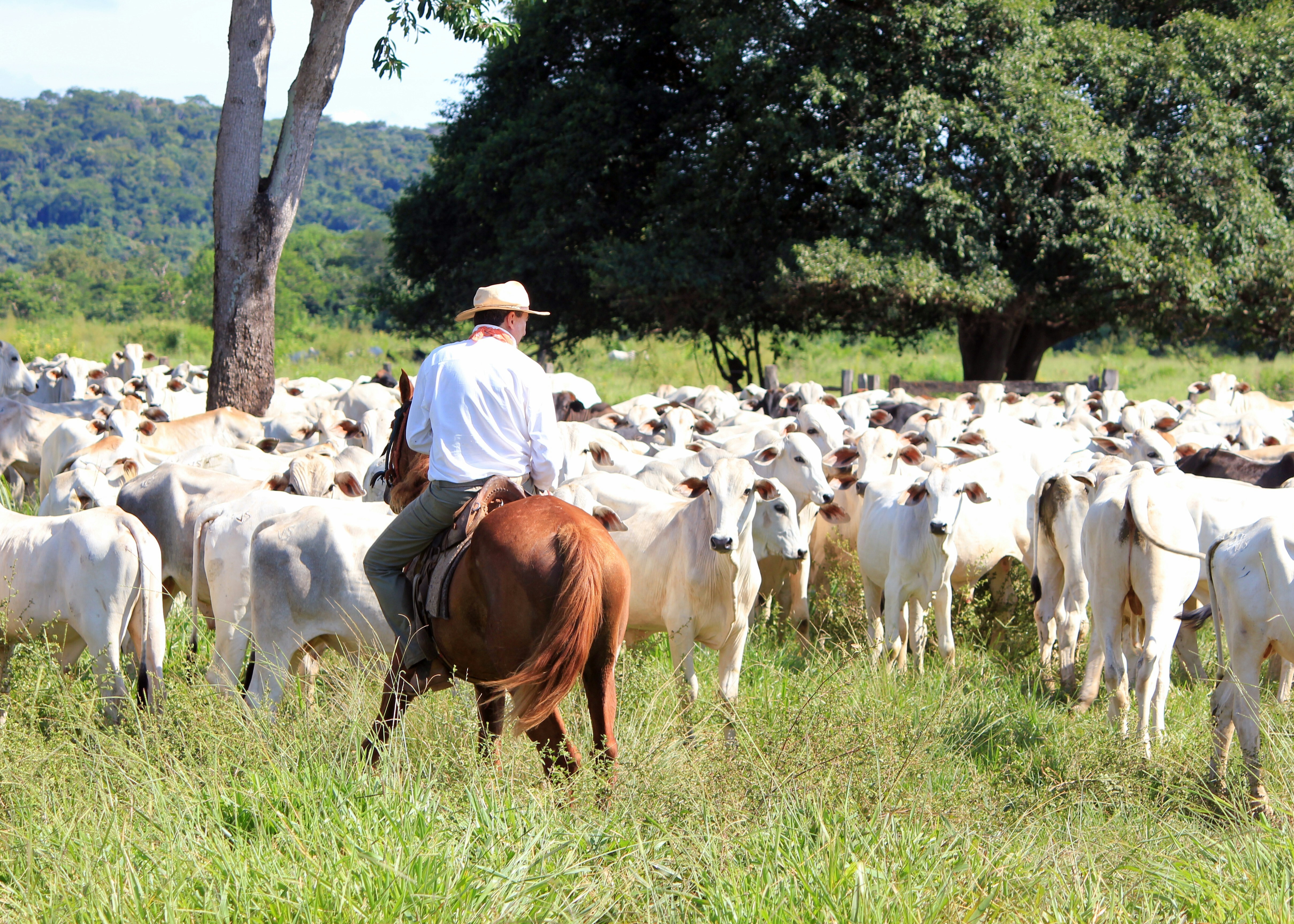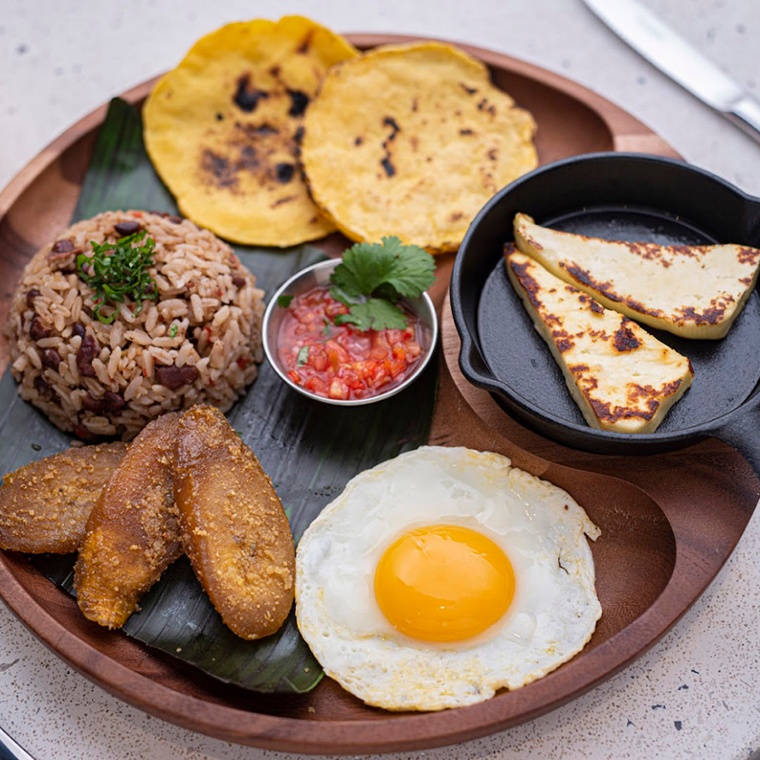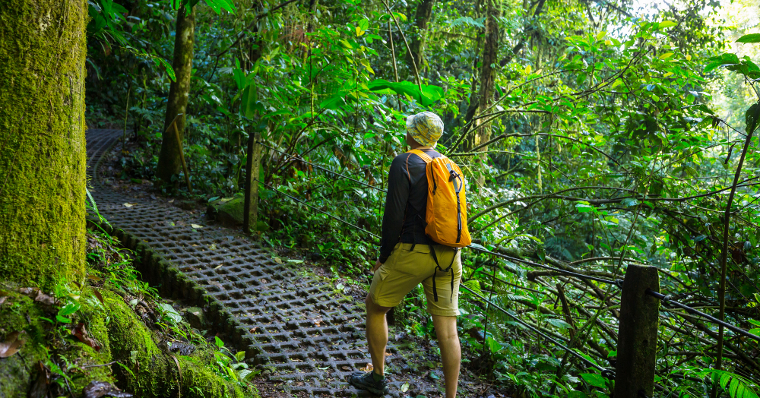From Pasture to Plate | Celebrating Costa Rica’s Beef Heritage

Costa Rica’s rolling hills and verdant pastures have long supported a thriving cattle ranching industry, a tradition that stretches back to the country’s colonial roots. In Costa Rica, beef farming reflects centuries of agricultural heritage and underscores a commitment to sustainable practices and community support.
At the Ocotea Boutique Hotel, we celebrate this heritage through partnerships with local farmers and the inclusion of traditional dishes on our menu. The talented chefs and their culinary team at Ocotea put a fresh and delicious spin on these traditional Costa Rican dishes, using only the freshest local ingredients to craft unforgettable culinary experiences. Let’s explore the rich story of beef production in Costa Rica.
A Tradition of Ranching in Monteverde

Cattle ranching has been an integral part of Costa Rican life since the 16th century, when Spanish colonizers introduced cattle to the Americas. Over generations, beef farming has evolved from a subsistence practice into a significant industry, weaving itself into the nation's cultural and culinary fabric. While most larger cattle ranches can be found at lower elevations, Monteverde remains a hub for dairy farmers who uphold these traditional practices.
Costa Rica’s Thriving Cattle: Brahman Resilience

Some parts of Costa Rica hail cooler climates, while others are quite tropical. This showcases the Brahman’s ability to adapt, and its rugged terrain demands a hardy breed of cattle. Luckily, this cattle breed fit the bill perfectly. Brahman cattle are a regional staple known for their resilience to heat, humidity, and parasites. Their adaptability ensures high-quality beef production while allowing ranchers to maintain sustainable practices.
Besides Brahman cattle, Costa Rica is also home to other common cattle breeds used for beef production, such as Indo-Brazilian, Gyr, and their crosses with Brahman. These breeds share similar traits that make them well-suited to the tropical climate, such as heat resistance, adaptability to humid environments, and efficient grazing on tropical grasses.
Additionally, Costa Rica has some dual-purpose breeds, like Brahman milkers or Brown Swiss, that are occasionally used for milk and beef production. However, Brahman remains the dominant choice for quality beef in Monteverde and similar regions.
Quality Beef: A Taste of the Tropics
Beef from Costa Rica is renowned for its deep flavor and tender texture, thanks to the country’s fertile grazing lands and the sustainable methods used by local farmers. Many raise grass-fed cattle, producing leaner cuts with a naturally rich taste. Just as importantly, their cattle farming approach supports the environment and the local community.
Key sustainable practices include:
-
Pasture Rotation: Moving the cattle to different fields daily helps to reduce overgrazing and maintain soil health
-
Eco-Friendly Grazing Methods: These limit impact on the surrounding cloud forest, such as integrating trees and shrubs into grazing land. This practice, known as silvopasture, provides shade, improves soil quality, and promotes biodiversity by mimicking natural forest conditions.
-
Integration with Conservation Initiatives: It’s very important to work with local reforestation and wildlife corridor protection to keep the ecosystem healthy
-
Low-Input Farming: Using techniques that minimize chemical use and water consumption
-
Support for Local Ecosystems and Economies: Traditional, land-conscious techniques reduce the need for costly chemical inputs, preserve long-term soil health for future farming, and keep income within the community by supporting small-scale, family-run operations.
Traditional Dishes and Culinary Heritage

Beef holds a special place in Costa Rican cuisine, forming the centerpiece of many beloved dishes. Classics like olla de carne, a hearty stew of beef and root vegetables, and the beef consommé (shown above) showcase the versatility and flavor of locally raised beef.
Nectandra’s Tribute to Local Flavors

At Nectandra, the Ocotea Hotel’s on-site restaurant, local brangus beef is transformed into mouthwatering creations that honor Costa Rica’s culinary roots. Indulge in dishes like the rib-eye, perfectly seasoned and grilled to tender perfection, or the beef consommé, slow-cooked with a medley of fresh, locally sourced vegetables. Each bite tells a story of Costa Rica’s commitment to sourcing quality beef and upholding longstanding traditions.
Beef Farming and Sustainability

Costa Rica’s ranchers take pride in sustainable farming practices that protect the region’s unique ecosystem. From rotational grazing to organic feed, these methods ensure that cattle farming coexists harmoniously with the environment.
A Community Built on Beef
The partnership between Costa Rica’s ranchers and local businesses like the Ocotea Boutique Hotel strengthens the community, fostering economic growth and cultural preservation. Our ranchers continue to provide quality beef raised in the same time-honored ways as their forefathers.
Thanks to this tradition of working with the land using sustainable practices, Costa Rica's beef producers don’t face the same struggles as those in countries that rely on huge industrialized beef ranches. Farmers here don’t need to monopolize resources to thrive, and they bring much to the community.
%2002.jpg?width=760&height=608&name=Wagyu%20Ribs%20(300gr)%2002.jpg)
Most of this article has focused on the Costa Rican cattle industry’s meat production, but it goes so much further than delicious beef dishes and artisanal cheeses. To close the loop on sustainability, you will find leather goods like handmade saddles and belts for sale in local markets, and even traditional bull’s horn decorations.
For intrepid travelers who want to experience life on a traditional dairy farm, tours are available that let you milk cows and make your own handmade cheeses. Farming in Costa Rica is an industry, but it’s also a way of life.
.jpg?width=760&height=608&name=ivana-cajina-19MqG0yRIDc-unsplash%20(1).jpg)
Taste the Difference
From the lush pastures to the tables of Nectandra Restaurant, Costa Rica’s beef farming heritage is a story of resilience, tradition, and community. When you sample the flavors of Costa Rica, you experience a little taste of history, quite literally. The rich sauces, fresh vegetables, and thick chunks of beef that make up so many of Costa Rica’s traditional dishes have sustained generations of Costa Ricans in a country known for its health and the longevity of its people.
If you want to dive a little deeper into the taste of Costa Rica in Monteverde, visit us at Nectandra Restaurant, where every meal is infused with Costa Rican history and culture.




